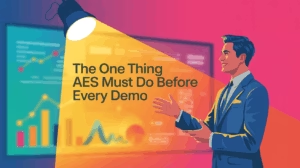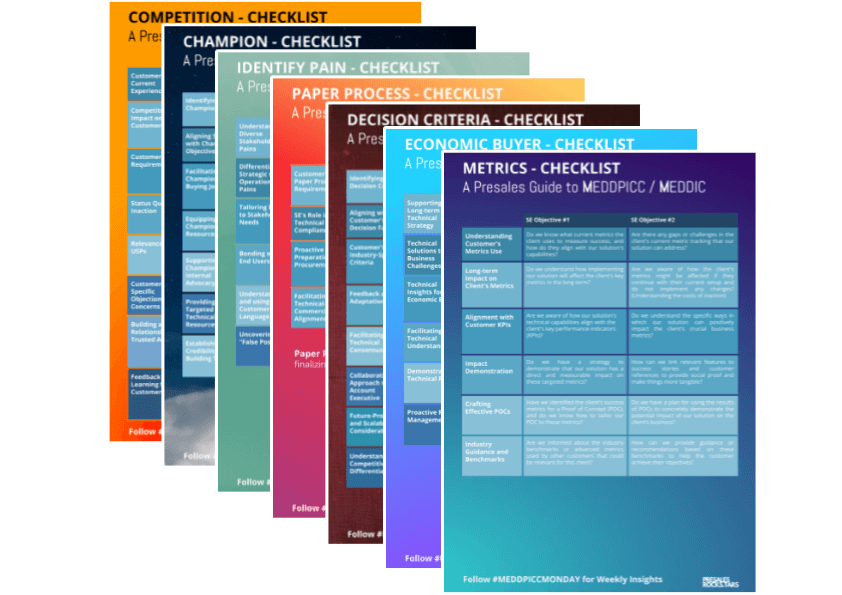I get this question a lot: “How should I adapt my demo for a German audience?”
I am German. I don’t think we are weird or impossible to please.
But there are a few patterns worth knowing, especially if you are used to a more American way of selling.
German buyers tend to focus on reducing risk. They want a decision they can defend internally. They like substance more than show. They want to see a plan.
Your job in the demo is to make the decision feel safe, practical, and worth it.
Here are five rules I have learned that make a big difference, with why they matter, how to apply them, and real “bad vs. better” examples.
1) Go easy on the hype
Why it matters
Big words can feel like a warning sign. If you say “amazing” or “game-changing”, many German buyers will start looking for proof.
They are not against ambition, they just want to see the path from today to the result.
Overselling can create fears about hidden costs or complexity.
How to apply it
Replace superlatives with proof. Use one number, one reference, one process step. Anchor claims in a standard they know. If you do not have numbers yet, say what you will measure and how.
Bad example
Our AI-powered platform is a game-changer that will transform your operations overnight.
Better example
In our pilot with Siemens, results were seen within three months, meeting the VDA 1.0 specification and reducing manual inspection times by 28 percent.
Takeaway
Boring in a good way often means credible.
2) Avoid general statements — be specific
Why it matters
Your champion will need to explain your value to others, IT, security, procurement, maybe the works council.
Vague claims do not help them.
Specific numbers can be copied straight into their business case.
How to apply it
Swap “many customers” for a real segment. Give a range if you can’t give a single number. Be transparent about how you calculated it.
Bad example
Everybody uses this feature all the time.
Better example
Around two-thirds of our automotive customers use this feature daily, and it delivers roughly 80 percent of their documented process savings.
Takeaway
Specifics show you know your market and respect their diligence.
3) Make benefits concrete — show before and after
Why it matters
“Saving time and money” is meaningless until you explain how much, where, and compared to what.
German buyers want to see exactly what changes on Monday morning.
How to apply it
Tie each benefit to a job to be done. Quantify the change. Give context like team size, transactions, or entities.
Bad example
It saves time and money.
Better example
It reduces manual reporting steps by 70 percent, cutting the monthly close from three days to six hours across 14 entities.
Takeaway
When they can picture the improvement, they can sell it internally.
4) Use “you” language — help them simulate success
Why it matters
Saying “we” keeps the focus on the vendor. Saying “you” helps the buyer imagine using the solution.
That mental picture makes the decision feel closer and safer.
How to apply it
Frame each step in their world. Name their systems and roles. End each section with what they will have and when.
Bad example
We can go live in three weeks.
Better example
You can roll this out to your first site in ten weeks, including integration with SAP.
Takeaway
“You” moves the story into their company.
5) Be upfront about concerns
Why it matters
German buyers think about risks early, integration, compliance, change management, support.
If you skip or gloss over these, you lose trust.
If you address them with proof, you build it.
How to apply it
Include a short risk section in the demo. Share reference stories that show how others overcame the same worry.
Bad example
Setup is quick and easy, and you’ll be up and running in no time.
Better example
You might think this will require a big IT project, but here is how VW went live in two weeks without extra headcount.
Takeaway
Acknowledge the doubt, then reframe it with proof.
The bigger picture
Behind these rules is one main idea: your demo is not just about showing software. It is about giving your champion the evidence and the language to win the internal discussion when you are not in the room.
- Several stakeholders: Most German deals involve business, IT, security, compliance, procurement, and sometimes the works council.
- Compliance mindset: People want to be audit-ready, which is why they ask about data flows, hosting, and certifications.
- Risk culture: Worst-case questions are normal, not hostile. If you answer them early, you make progress.
- Group decision-making: Clear data and a safe plan speed up consensus.
How to prepare
Proof pack
- Three short reference stories, ideally one from Germany.
- Three measurable outcomes, with how you measured them.
- One-page architecture and data flow.
- DPA template and ISO or SOC documents.
- List of integrations with level of effort.
- Pricing page showing what is included and what is not.
Success plan
- Clear success criteria for a pilot or phase 1.
- Two-month timeline with milestones.
- Roles and responsibilities for both sides.
- Training plan.
- Safe rollback option.
Demo structure
- Start with a one-minute solution snapshot showing the end state.
- Then show the three steps that deliver it.
- Pause after each to check fit and invite concerns.
- End with a short recap and clear next steps.
Final thought
You do not need to change your personality to sell in Germany.
You just need to focus on reducing risk and increasing clarity.
Facts instead of hype. Specifics instead of vague claims. Clear before-and-after benefits. “You” instead of “we”. And real answers to real concerns.
Do this, and you will make it easier — and safer — for people to choose you.
Once a German customer trusts you, they will often stay for years and recommend you to others.





